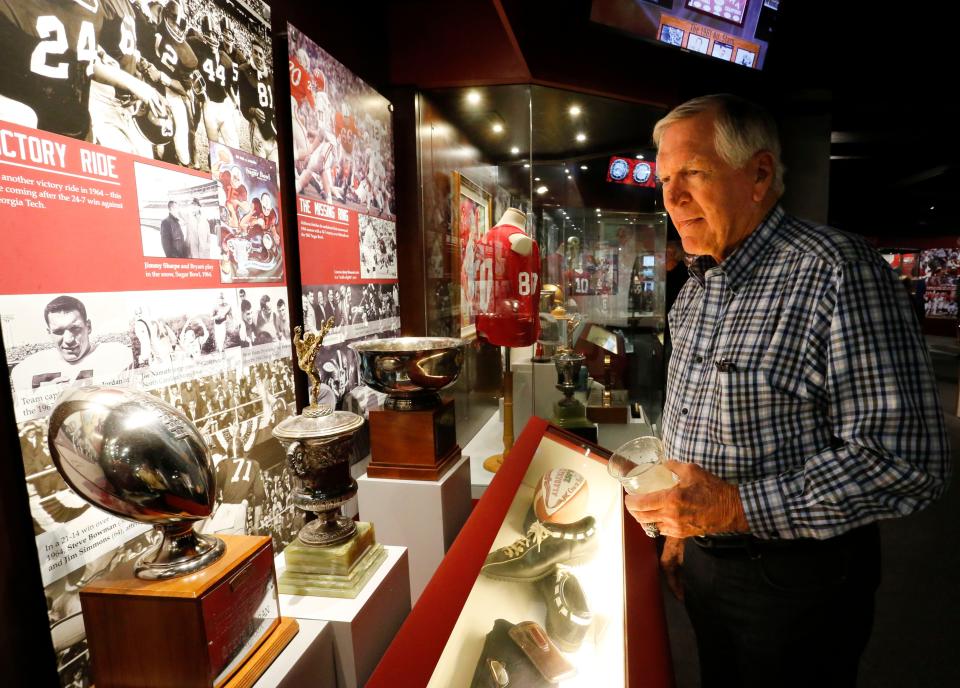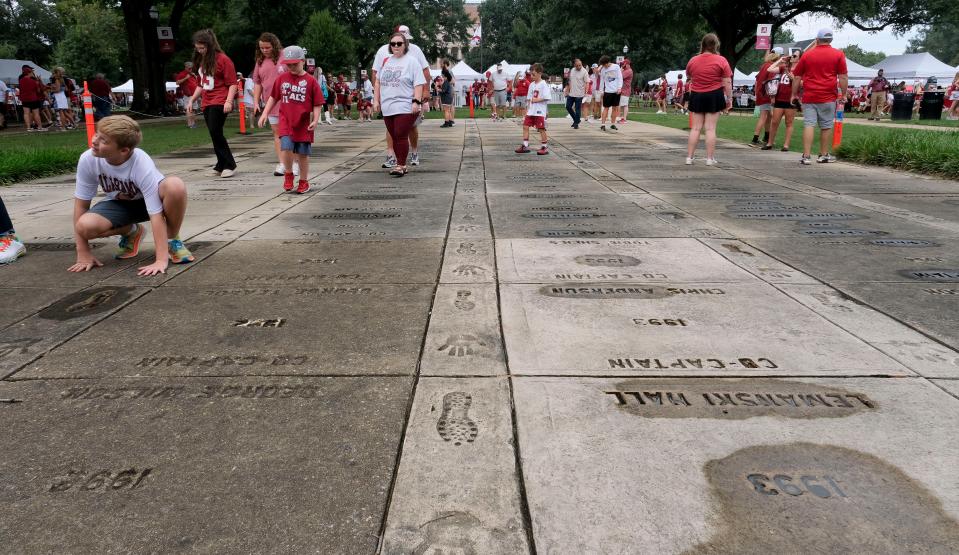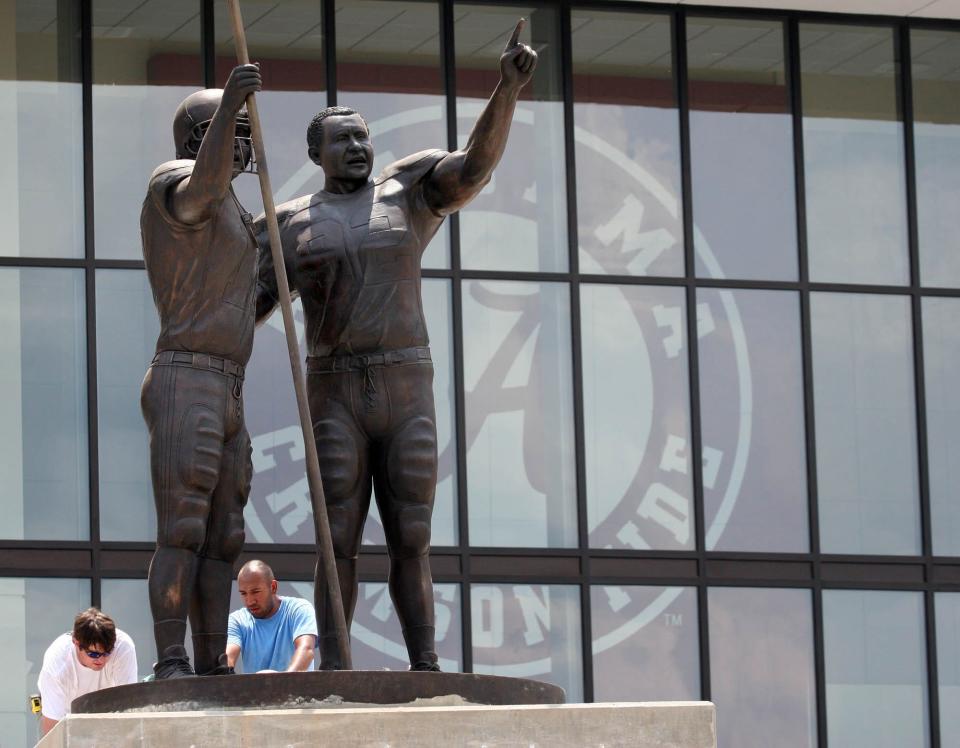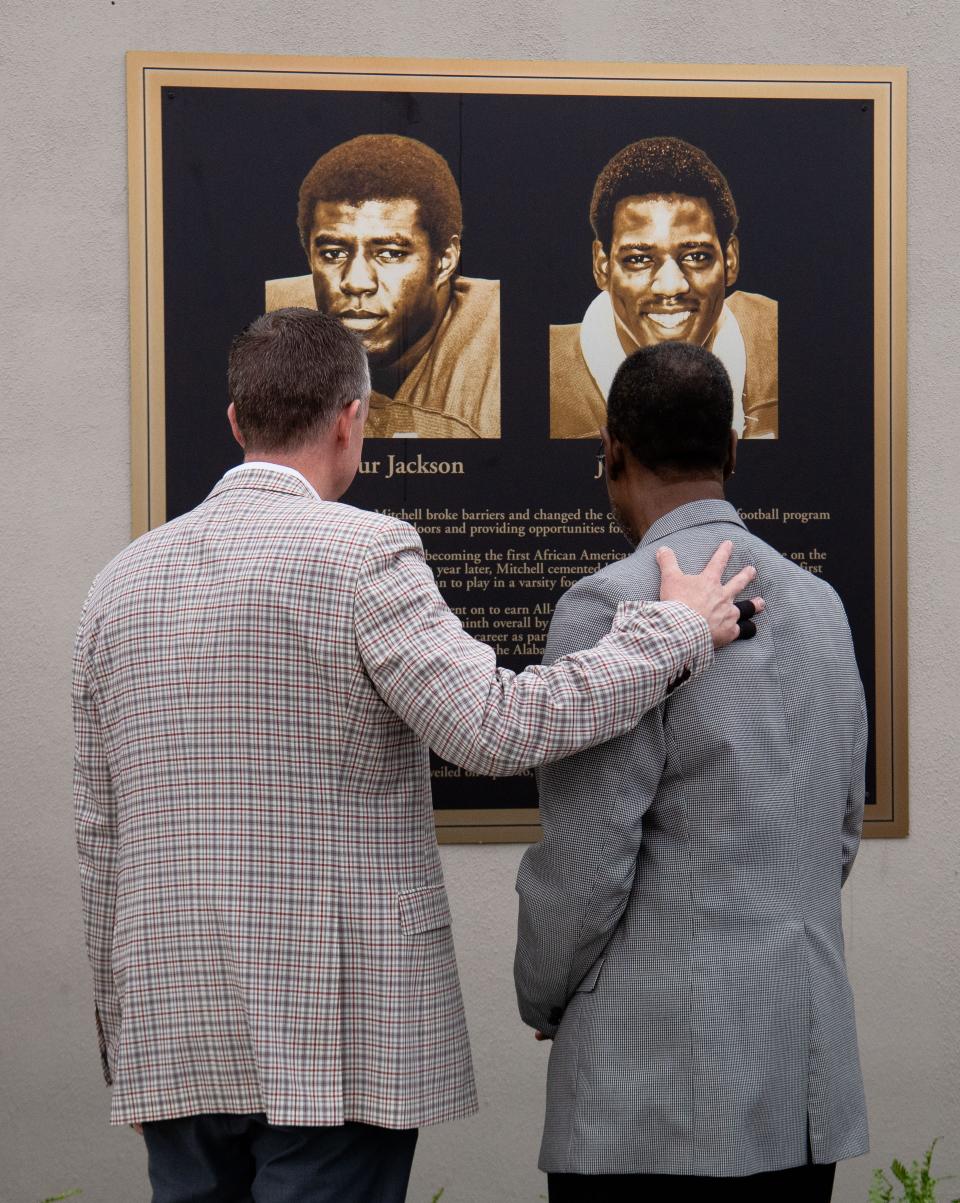How to soak up some Crimson Tide history while visiting Tuscaloosa
- Oops!Something went wrong.Please try again later.
- Oops!Something went wrong.Please try again later.
- Oops!Something went wrong.Please try again later.
Fans visiting Tuscaloosa for the University of Alabama's final home football game of the 2023 season can take a walk through the Crimson Tide's gridiron history.
UA will face the Chattanooga Moccasins on Saturday at Bryant-Denny Stadium. Kickoff is set for 11 a.m. and will be shown by streaming only on SEC Network+ or ESPN+. Tickets, priced at $25, are available at www.rolltide.com.
![The Paul W. Bryant Museum features an interactive wall display where fans can look up information on the legendary coach's teams and individual players. [Staff Photo/Gary Cosby Jr.]](https://s.yimg.com/ny/api/res/1.2/vH3igrm37R_YbSIqcy9NAA--/YXBwaWQ9aGlnaGxhbmRlcjt3PTk2MDtoPTU5Ng--/https://media.zenfs.com/en/the-tuscaloosa-news/4cb1569a6861272675899ee155388cc0)
Before or after the game, fans can find plenty of UA artifacts within walking distance of the stadium.
Here's a rundown of the places fans learn more about the legacy of Alabama football:
Paul W. Bryant Museum
The best place for history-minded fans to start is at the Paul W. Bryant Museum, 300 Paul W. Bryant Drive. The museum has photos, films, audio, trophies and other memorabilia dating back to 1892, when UA established its inaugural gridiron squad.
The idea for the museum came from Bryant, UA's head football coach from 1958 to 1982 and winner of six national championships and 13 SEC championships.
He wanted a museum that honored players, coaches, staff and other contributors to his football legacy, along with the entire history of Tide football.
The Bryant Museum opened to the public in October 1988 and attracts thousands of visitors each year to its 8,000-square foot exhibit space.

Among the museum's highlights are:
The Wall of Honor, a video touchscreen that highlights Bryant's teams and players from throughout his 38-year head coaching career.
The Tide Through Time, an exhibit that chronicles the history and tradition of the Crimson Tide from 1892 through the Nick Saban era.
Coach Bryant's office, an exact replica of Bryant's work desk, an environment that former players called "awe-inspiring."
The Crystal Hat, a Waterford crystal replica of Bryant's houndstooth hat, created by internationally acclaimed sculptor Miraslav Havel.
Breaking Barriers, an exhibit that tells the story of Bryant's journey to integrate the football program.
The Paul W. Bryant Museum is open from 9 a.m. until 4 p.m. Tuesday through Sunday.Admission is $5 for adults and $3 for children. Admission is free for University of Alabama faculty, staff and students.
For more information, go to https://bryantmuseum.com.
Walk of Fame
The Walk of Fame is a tradition that is unique to Alabama football: Slabs of concrete with the names, handprints and cleat marks of UA football captains dating back to the 1940s.
Situated around Denny Chimes, a 115-foot bell tower on the Quad, the concrete blocks provide a "Who's Who" of Alabama football.

Joe Namath, Ken Stabler, Lee Roy Jordan, Johnny Musso, Ozzie Newsome, Cornelius Bennett, Shaun Alexander Mark Ingram, Tua Tagovailoa and Bryce Young are just of few of the UA stars who are enshrined in the Walk of Fame.
Each year before the spring football game, coach Nick Saban and the captains of the previous season's squad gather for the ceremony to place their handprints and cleat marks on the concrete slabs.
Denny Chimes also has a connection with Alabama football history: It's named after former UA president who helped boost the football program. For years, the stadium known as Denny Stadium before the Alabama Legislature added Bryant's name in 1975.
The Walk of Champions
The path leading to the Crimson Tide locker room, built in 2006, is paved with plaques honoring UA's 18 national championship football squads.
Known as the Walk of Champions, the path is on the north side of Bryant-Denny Stadium facing University Boulevard.
The Walk of Champions also features 9-foot bronze statues of the five football coaches who earned national titles at UA. Each statue weighs in at around 2,000 pounds. Four of the statues (Wallace Wade, Frank Thomas, Paul W. "Bear" Bryant and Gene Stallings) were installed in 2006. The Nick Saban statue was added after UA's 2009 national championship.

While the coaches' statues are on the right side facing Bryant-Denny Stadium, on the other side of the stadium entrance is a statue of two players holding a Crimson Tide flag. Center Antoine Caldwell and middle linebacker Matt Collins, who both played at UA in the mid-2000s, served as models for the statue.
Outside the stadium's Gate 1 is a plaque that honors the integration of the Crimson Tide football team in the early 1970s. The plaque, dedicated in April 2022, recognizes UA's first Black football players, Wilbur Jackson and John Mitchell.
Before the plaque's dedication, UA officials said that the leadership demonstrated by Jackson and Mitchell during their playing days at the Capstone was instrumental in changing the course of the Alabama football program forever, breaking down barriers, opening doors and providing opportunities for generations to come.

Jackson, who is from Ozark, went on to become a team captain on the 1973 national championship team and earned All-SEC honors. He was drafted ninth overall by the San Francisco 49ers in the 1974 NFL Draft.
Mitchell, who is from Mobile, was a team captain and an All-American for Alabama, where he also earned All-SEC honors. After his playing career ended, Mitchell became Alabama's first Black assistant coach in 1973 and went on to lengthy career as an assistant coach in the NFL.
Reach Ken Roberts at ken.roberts@tuscaloosanews.com.
This article originally appeared on The Tuscaloosa News: Museum, statues and plaques offer insight into UA football history

